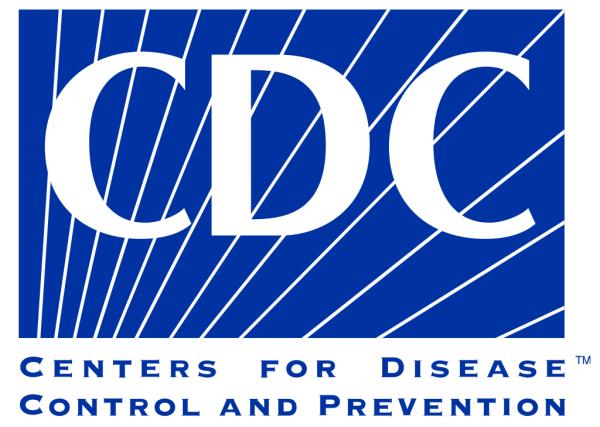A Short Primer on PFAS
PFAS, short for per- and polyfluoroalkyl substances, are thousands of chemicals used in consumer products dating back to the 1940s. Their chemical properties make them useful for nonstick cookware, stain-resistant fabric, flame retardants, cosmetics, food packaging, and other products. The two most prevalent and most studied PFAS chemicals, PFOA and PFOS, were voluntarily phased out by chemical manufacturers between 2000 and 2015. However, because these chemicals stay in the environment for a long time, they are still found at low levels in drinking water and soil.
PFAS have been detected in people’s blood. This is not surprising because, over the years, scientists have been able to measure chemicals at lower and lower levels, with PFAS being measured at levels of nanograms per liter (ng/L). A nanogram is one-billionth of a gram, and ng/L is equivalent to parts per trillion (ppt). - a single drop of food coloring in 18 million gallons of water.
CDC Guidance
The CDC says that
“blood testing can inform clinicians of both recent and past exposures to PFAS, which can guide patients on information that could guide
- exposure reduction,
- greater recognition of PFAS-associated health effects, and
- possible psychological relief from knowing one’s PFAS blood level.”
Let’s touch on each of these issues.
Exposure reduction
The CDC admits that these blood tests won’t help identify sources of PFAS exposure. They suggest installing a water filtration system to reduce PFAS levels, testing private well water, limiting fish, meat, eggs, or dairy known to be contaminated with PFAS, and using cleaning and consumer products free of PFAS.
These suggestions may be helpful for people who exceed the safe level of PFAS in their blood. However, since the CDC has issued no guidance as to the safe level, telling everyone with any blood level of PFAS to get a water filter and limit their exposure to the basic food groups (how is anyone to know if their food is contaminated with PFAS?) is nonsensical at best and harmful at worst and not based on science.
Health Effects
“Studies have linked exposure to these chemicals to a slew of health conditions, such as increases in cholesterol levels, decreases in birth weight, lower antibody responses to vaccines, kidney and testicular cancer, pregnancy-induced hypertension, preeclampsia, and changes in liver enzymes. Other research has also suggested a link between PFAS and thyroid disease, breast cancer, and ulcerative colitis.”
The critical word is “linked.” The studies have NOT shown that PFAS caused these conditions. Some studies have shown an association between higher levels of PFAS in the blood and these conditions; other studies have not shown an association.
Not only have scientists not demonstrated a cause-and-effect relationship between PFAS and any health conditions, but they also have not determined a safe level in blood. Many governments and expert groups have estimated a safe dose for PFOA; however, these values differ by more than 100,000 fold. The EPA proposed health advisories (safe levels) of chemicals in drinking water of 0.004 ng/L for PFOA and 0.020 ng/L for PFOS. As I have discussed, these numbers are based on non-credible science and are so low that they cannot even be measured in drinking water. [1]
Psychological relief
The only reason that people experience psychological stress from worries over PFAS exposure is because government agencies, including the CDC, are telling people that there are health risks from exposure. The surest way for people to experience psychological relief is for the CDC to base its guidance on science and not scare people with unnecessary tests.
There is no scientific rigor behind the CDC’s guidance, demonstrated by the fact that in addition to no known safe or unsafe level, there are no currently approved medical treatments to reduce PFAS within the body. Why would the CDC issue this guidance?
“Communities across the country have suffered far too long from the ever-present threat of PFAS pollution. That is why President Biden launched a whole-of-government approach to aggressively confront these harmful chemicals, and EPA is leading the way forward.”
- EPA Administrator Michael Regan
Currently, the CDC has guidance for tests for people exposed to extremely high levels of chemicals in emergencies and for children exposed to lead. The CDC guidance for lead is clear-cut and precise and provides useful information to the physician. This is in contrast to the PFAS testing guidance, which is not science-based and provides no useful information to the physician or patient.
Every medical test, no matter how small, costs money. By saying that physicians may want to test their patient’s blood for PFAS, the CDC is increasing costs that individuals, insurance companies, and government health programs will ultimately bear. Usually, increased tests can be defended because they improve patients’ health. This is not the case with PFAS; physicians cannot tell their patients what their results mean for their health or how to reduce their exposure level.
The more significant cost is that of fear to the individual and their families. Imagine being told by your physician that a scary-sounding chemical has been found in your blood, but no more information about what it means or how your health will be affected.
The current PFAS guidance will not help the CDC regain the public’s trust.
[1] To narrow the disparities between the safe levels, an independent group of 24 scientists from 8 countries estimated a safe dose of PFOA ranging from 10 to 70 ng per kilogram per day - approximately 17,000 to 122,000 times greater than that estimated by the EPA.




